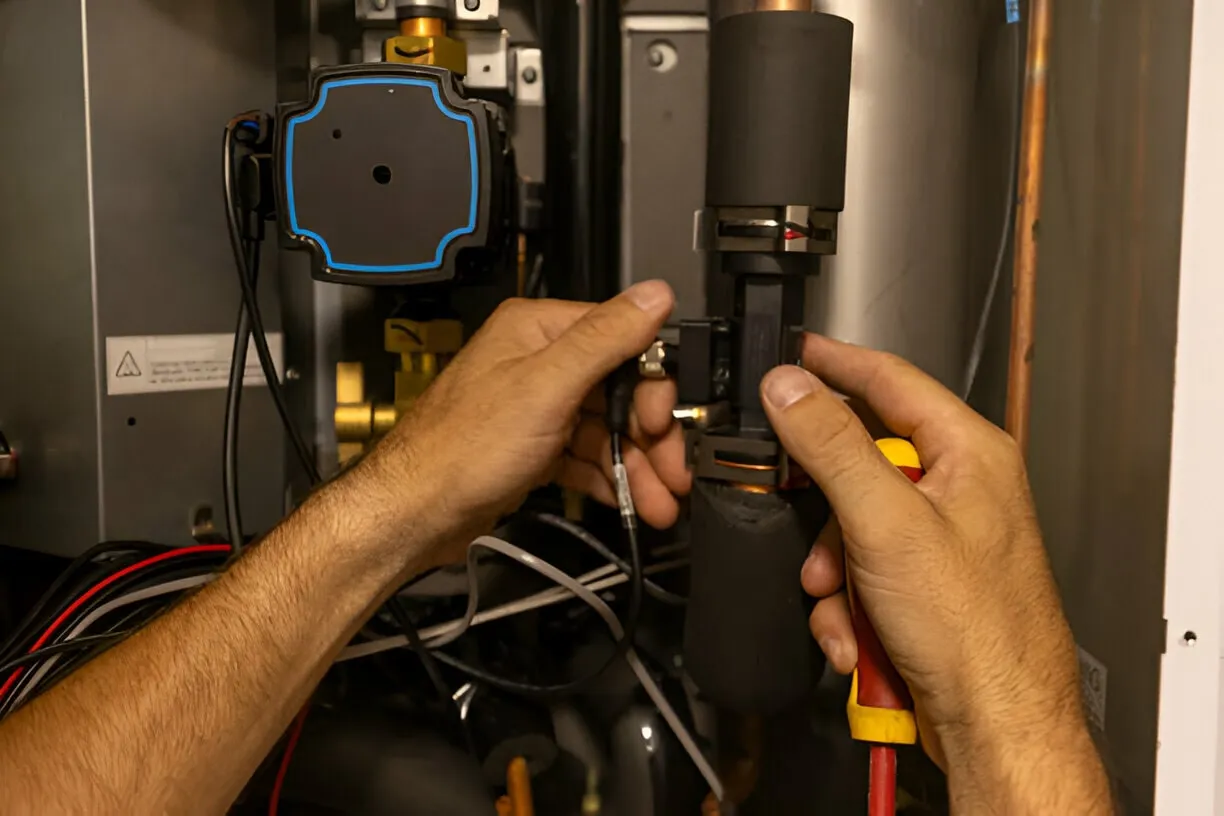Heating Tune-Up in Antelope, CA
A professional heating tune-up ensures your furnace or heat pump is safe, reliable, and running efficiently when Antelope winters arrive. Whether your home uses a gas furnace, electric furnace, or heat pump, a thorough seasonal inspection and maintenance visit addresses common failure points, reduces energy use, and helps prevent inconvenient breakdowns. In Antelope, CA, local factors like dusty summers, temperature swings between day and night, and older suburban homes make an annual heating tune-up particularly important to maintain comfort and safety.
Why a heating tune-up matters for Antelope homes
- Antelope’s dry, dusty conditions lead to clogged filters, dirty burners, and reduced airflow that sap efficiency and increase wear.
- Cooler winter nights and frequent start-stop cycles place added stress on older systems and components.
- Proper combustion tuning and heat exchanger inspection reduce the risk of carbon monoxide exposure from cracks or leaks in gas systems.
- Regular maintenance lengthens equipment life and helps avoid costly emergency repairs during peak cold spells.
Common heating issues we identify during a tune-up in Antelope, CA
- Weak or uneven heating in rooms
- Increased energy bills despite normal use
- Frequent on-off short cycling
- Strange noises: rattling, grinding, or squealing
- Yellow or flickering pilot light on gas furnaces
- Excess dust buildup and poor indoor air flow
- Faulty thermostats or inconsistent temperature control
- Visible rust, corrosion, or signs of a cracked heat exchanger
What a heating tune-up includes
A complete tune-up follows a systematic checklist to optimize performance and confirm safety. Typical tasks include:
- Visual system inspection and safety walkthrough
- Inspection and cleaning of burners and combustion chamber
- Heat exchanger inspection for cracks, corrosion, or deformation
- Pilot light and electronic ignition system check and cleaning
- Thermostat calibration and control verification
- Airflow assessment: filter check, duct visual check, and blower motor inspection
- Safety control tests including limit switches and rollout sensors
- Measurement of temperature rise and venting performance
- Lubrication of motors and moving parts where required
- Inspection of flue and venting for blockages or leaks
- Electrical connection check and tightening
- Performance optimization and operational test run
- Summary report of findings and recommended repairs or replacements
Diagnostic process explained
Technicians begin with a system history and symptoms review, then complete a visual safety inspection. For gas systems, combustion safety is prioritized: burners are cleaned, and flame characteristics are checked. Heat exchanger condition is examined because even small cracks can allow combustion gases into living spaces. For forced-air systems the blower assembly and air filter condition are assessed to restore proper airflow. Technicians measure temperature rise and system cycling behavior to ensure the unit is operating within manufacturer specifications. Any abnormalities are noted and explained in plain language with recommended next steps.
Expected duration
Most heating tune-ups in Antelope take about 60 to 90 minutes for a single heating unit. Time varies with system type, age, and condition. Older units, multi-zone setups, or systems requiring deeper cleaning or access to tight blower compartments can extend the visit. Technicians will perform safety checks that cannot be rushed, since addressing potential carbon monoxide risks and electrical issues is critical.
Benefits of an annual heating tune-up
- Improved reliability and fewer unexpected breakdowns during cold nights
- Better energy efficiency and lower monthly heating costs
- Longer heater lifespan and delayed need for full replacement
- Enhanced indoor comfort with more consistent temperatures
- Reduced risk of hazardous conditions such as carbon monoxide leaks
- Cleaner indoor air through filter checks and reduced dust circulation
- Documentation of system condition, useful for homeowners and future service planning
Recommended frequency
- Annual tune-up before the heating season is the industry standard and the best practice for Antelope households.
- Homes with heavy use, older equipment (10+ years), or persistent indoor air quality concerns may benefit from twice-yearly checks.
- Properties exposed to higher dust levels, pets that shed heavily, or recent home renovations that generate debris should consider more frequent filter checks and earlier maintenance.
When a tune-up should trigger repairs or replacement
During the tune-up, technicians will point out items that require repair or closer monitoring, such as:
- Cracked heat exchanger or flame roll-out: safety-related and requires prompt professional repair
- Repeated ignition failures or deteriorated control boards: may indicate end-of-life for older components
- Severely corroded burners or persistent venting problems: repair or replacement recommended
- Blower motor failures or noisy bearings: replace or rebuild depending on age and cost-effectiveness
Membership and ongoing value
Many homeowners find ongoing maintenance programs helpful. Membership plans typically prioritize scheduling, include regular inspections and tune-ups, and often provide discounted repair rates and extended service coverage on repeat visits. For Antelope residents, a membership can ensure your heater is serviced ahead of seasonal temperature swings and that routine upkeep stays on schedule.
Practical maintenance tips for Antelope homeowners
- Replace or clean air filters every 1 to 3 months during heavy use to prevent restricted airflow.
- Keep vents and return grilles clear of furniture, rugs, and dust to maintain balanced airflow.
- Seal and insulate accessible ducts where practical to reduce heat loss and improve system efficiency.
- Schedule your tune-up in early fall, so the system is ready for the first cold nights.
- Monitor for signs such as unusual smells, loud noises, or yellow pilot lights and mention them at the time of your tune-up.
A professional heating tune-up gives Antelope homeowners peace of mind by combining safety checks, performance tuning, and practical recommendations tailored to local conditions. Regular maintenance is the most effective way to protect comfort, safety, and budget as the seasons change.
Other Services
Customer Testimonials
See what our satisfied customers have to say about their experience with Always Affordable
Plumbing & HVAC.






